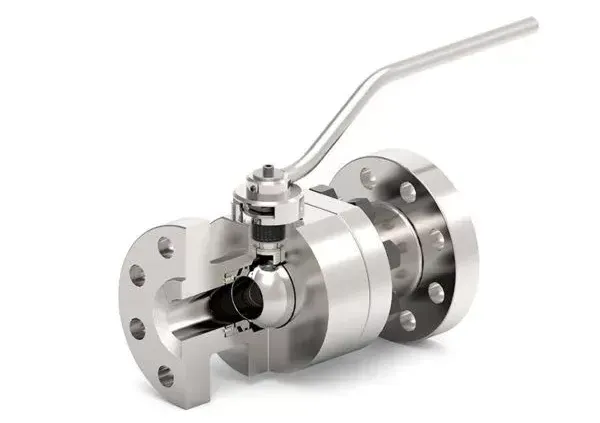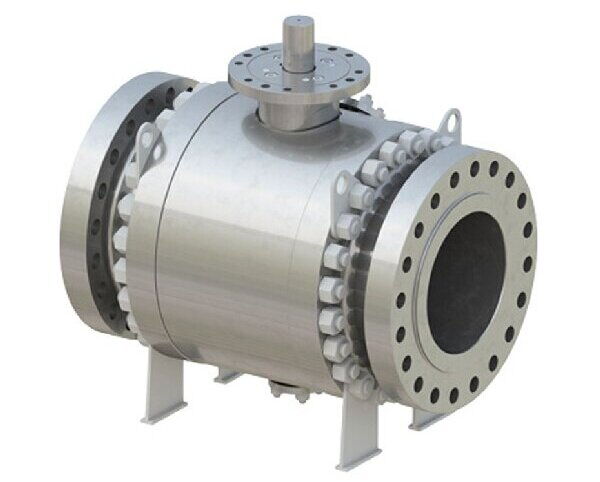In industrial valve systems, the choice between a floating ball valve and a trunnion ball valve can have significant implications for the performance, reliability, and cost-effectiveness of a given system. Both valve types serve as essential components in regulating fluid and gas flow, but their design, functionality, and ideal use cases differ. Understanding these differences is crucial for selecting the right valve for a particular application, especially in industries like oil and gas, chemical processing, power generation, and water treatment.
In this article, we will delve into the fundamental design and operational differences between floating ball valves and trunnion ball valves. Additionally, we will explore their respective advantages, disadvantages, and applications to help engineers and operators make informed decisions when selecting the most appropriate valve for their systems.
A floating ball valve is a type of valve where the ball, which controls the flow of media, is free to float within the valve body. The ball is connected to a stem, which is typically operated by a handle, actuator, or gear mechanism. The ball is designed to move slightly when pressure is applied, creating a tight seal between the ball and the valve seat. When the valve is in the closed position, the ball presses against the seat, preventing flow through the valve.
The floating ball valve gets its name from this free-floating design. Unlike trunnion ball valves, the ball is not held in place by a fixed support on both sides, but rather is free to move slightly in response to fluid pressure. This characteristic allows floating ball valves to be highly responsive and ideal for applications where a certain degree of flexibility and responsiveness is required.

The ball's ability to float allows it to create a tight seal under the pressure of the fluid, improving the valve’s ability to shut off the flow.
Floating ball valves have a simpler design compared to trunnion ball valves, which typically makes them less expensive.
These valves are often smaller and lighter, which makes them suitable for compact applications.
Floating ball valves can be made from a variety of materials, including brass, stainless steel, and plastic, making them highly adaptable to different environments.
Floating ball valves are widely used in applications where sealing tightness and ease of operation are essential. They are commonly found in industries such as:
For controlling the flow of fluids in pipelines, refineries, and offshore platforms.
For controlling the flow of chemicals in reactors, mixers, and storage systems.
For managing the flow of treated water and wastewater in filtration systems.
For regulating the flow of hot or cold fluids in heating, ventilation, and air conditioning systems.
A trunnion ball valve is a type of ball valve in which the ball is supported by two fixed trunnions (posts) at the top and bottom. These trunnions hold the ball in place, allowing it to rotate with minimal movement. The ball is not free-floating like in a floating ball valve but is instead securely supported on both sides. This design helps to minimize the forces that act on the valve during operation, providing a more stable and consistent seal.
The trunnion ball valve is specifically engineered for high-pressure and high-flow applications. Due to the support provided by the trunnions, these valves are able to handle larger sizes, higher pressures, and more aggressive media without compromising performance. They are typically used in situations where the flow needs to be controlled under extreme conditions, such as high temperatures, pressures, or abrasive media.

The ball is supported at both ends by trunnions, which reduces the load on the valve stem and increases the stability of the valve.
Since the ball is supported by the trunnions, the actuator requires less torque to operate the valve, resulting in smoother and more efficient operation.
Trunnion ball valves are ideal for high-pressure and large-diameter applications due to the support they provide to the ball.
The trunnion design reduces wear and tear on the ball, the stem, and the seats, extending the valve’s overall service life.
Trunnion ball valves are used in industries where high reliability, durability, and performance are critical. Common applications include:
In upstream and downstream processes, including pipelines, production facilities, and storage tanks.
In power plants where the valve controls the flow of steam, gas, and water under extreme pressures and temperatures.
For handling corrosive and high-temperature fluids in reactors, pumps, and pipelines.
For controlling the flow of hazardous chemicals in refineries and chemical plants.
Though both floating and trunnion ball valves serve the same basic purpose—regulating the flow of media through pipes—there are several key differences between the two designs. These differences primarily relate to their construction, performance characteristics, and ideal applications.
Floating Ball Valve: The ball is not supported on both sides, but instead floats within the valve body, pressing against the valve seat when in the closed position. This design is simpler and requires less material, making it ideal for smaller sizes and lighter-duty applications.
Trunnion Ball Valve: The ball is supported by trunnions or posts at both the top and bottom. This design makes it more complex and typically more expensive, but it provides more support, allowing the valve to handle higher pressures and larger diameters.
Floating Ball Valve: Floating ball valves are generally more suited to low- and medium-pressure applications. Since the ball is not supported, it can deform under high-pressure conditions, which could lead to leakage.
Trunnion Ball Valve: Trunnion ball valves excel in high-pressure environments. The trunnion supports prevent deformation of the ball, ensuring that the valve can handle much higher pressures without losing its sealing capacity.
Floating Ball Valve: Due to its free-floating design, the floating ball valve is often used where precise control of fluid flow and tight shutoff is important, but where only moderate pressures are involved. Its design allows for better sealing under lower pressure conditions.
Trunnion Ball Valve: Trunnion ball valves are used where high flow and tight shutoff are needed in high-pressure systems. The ball's stability ensures that the valve remains fully seated, providing a more secure shutoff and less potential for leakage under extreme conditions.
Floating Ball Valve: The torque required to operate a floating ball valve is generally higher compared to a trunnion ball valve, especially in larger sizes or higher-pressure systems. The floating ball design creates additional friction between the ball and seat.
Trunnion Ball Valve: The dual trunnion design of trunnion ball valves significantly reduces the torque required to operate the valve, especially in larger sizes or higher-pressure settings. This makes them more efficient and easier to operate with smaller actuators.
Floating Ball Valve: Floating ball valves are ideal for smaller sizes (typically up to 12 inches) and are used in less demanding applications where pressure and flow rates are moderate.
Trunnion Ball Valve: Trunnion ball valves are typically used in larger sizes (up to 48 inches or more) and are better suited for heavy-duty applications where high pressure, high flow, and larger diameters are required.
When deciding between a floating ball valve and a trunnion ball valve, it is essential to consider the specific requirements of your application, including pressure, flow rate, size, and the type of fluid being controlled. For applications that involve moderate pressures and smaller diameters, a floating ball valve may offer the best balance of cost and performance. However, for high-pressure applications or those requiring larger valve sizes and better performance in extreme conditions, a trunnion ball valve is the superior choice.
Both floating ball valves and trunnion ball valves offer unique advantages and are suited to different types of industrial applications. Floating ball valves are best for medium- to low-pressure systems requiring tight shutoff, while trunnion ball valves excel in high-pressure and high-flow environments, providing enhanced durability and reduced operational costs. By understanding the differences in design, functionality, and applications, engineers and operators can select the right valve to meet their specific needs and ensure reliable, efficient operations.